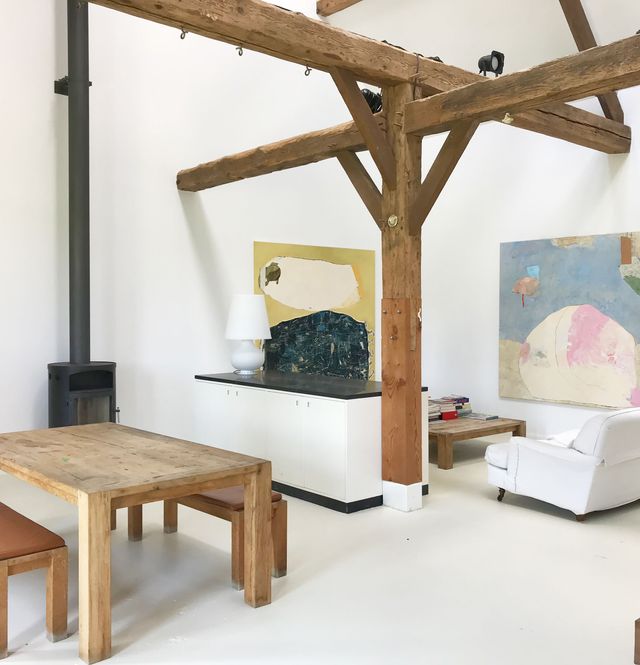Biophilic Design and Other Shades of Green
- Category
- Trendspotting
- Written by
- Rebecca Withers
- Published
- February 11, 2023

We recently added Looking Glass Lodge to the collection—a cabin in England that credits its ultra-natural look and feel to biophilic design. As the home’s owners tell it, “Our intention has been to create a closer connection to nature through the way the lodge has been built, using natural resources to create a sense of harmony between the architecture and the natural world.” A stay at Looking Glass Lodge is meant to reduce your stress levels and increase your wellbeing, something we can get behind without reservation, but what does biophilic design actually mean, and what sets it apart? We decided to dig a little deeper to discover more about this particular shade of green building.
At its simplest, biophilic design refers to spaces intentionally created to enhance our innate human passion for the natural world. Biophilia literally means “a love of nature”, from the Greek philia, or “love of,” and bio, or “life”. In other words, the love for living things.
Translated to the design realm, biophilia has come to characterize a deliberate approach to creating buildings that focus on this human connection to the natural world. Biophilic designs prioritize this life-affirming connection and mimic nature by incorporating natural lighting and ventilation, abundant plant life, and the use of organic shapes and forms. They often incorporate environmental features into the architecture, things like indoor water elements, trees, boulders, and landscaped interior beds, each designed to encourage the connection between humans and nature within the built environment. A biophilic home offers a direct experience of nature through light, air, water, and plants, and a more indirect experience through natural images, materials, colors and shapes.
This concept of bringing the outdoors in and reinforcing our inherent love of nature by design is more than mere philosophy. Biophilia has documented benefits—links to improved cognitive function, mental health, and physical well-being for us humans, and a more sustainable approach to construction that benefits Mother Nature. Biophilic design focuses on sustainability via renewable energies, water collection and quality improvement, clean air, recycled, reused and ethically-sourced materials, and a reduction of a structure’s carbon footprint.

The biophilic design movement began as an outgrowth of a 1984 hypothesis by Edward O. Wilson who, in his book Biophilia, stated that as a consequence of evolution, humans have an innate tendency to focus on life and to seek connections with nature and other life forms. Humans, Wilson said, are genetically predisposed to be attracted to nature, insisting that our love of the natural world is simply human nature.
Since Wilson’s publication, numerous studies have backed up and built on his hypothesis. Scientific researchers have found positive benefits of human interactions with nature—lower stress and anxiety levels, enhanced productivity and focus, improved recovery rates from mental and physical illness, not to mention increased calm. And architects and designers have jumped on the biophilic bandwagon, creating environments that engage with nature for the increased well-being of their inhabitants. Non-profit organizations such as The Biophilic Institute are also addressing emerging topics in the field, presenting research that links biophilic design to beneficial concepts such as feelings of awe, neuro aesthetics, eco-gentrification, olfactory design and rewilding.
Biophilic design purists note that mere exposure to nature within the confines of a building doesn’t necessarily make the structure biophilic. Instead, they argue that effective biophilic design depends on long-term, sustained engagement with nature. Biophilic design goes beyond the addition of plants to a room or living materials to a building and takes this greening of the built environment a step further, fostering an emotional human connection with the natural world.
Here at BoutiqueHomes, we welcome all shades of green. Spaces that promote the health and well-being of both humans and our planet are places worth promoting, and we absolutely love homes that enhance our relationship with the great outdoors. Biophilic design harnesses the power of natural habitats to all-around positive effect. With that in mind, we’ve put our dual passions for deep nature and great architecture to work, rounding up a selection of our properties we believe best celebrate this love of the natural world.
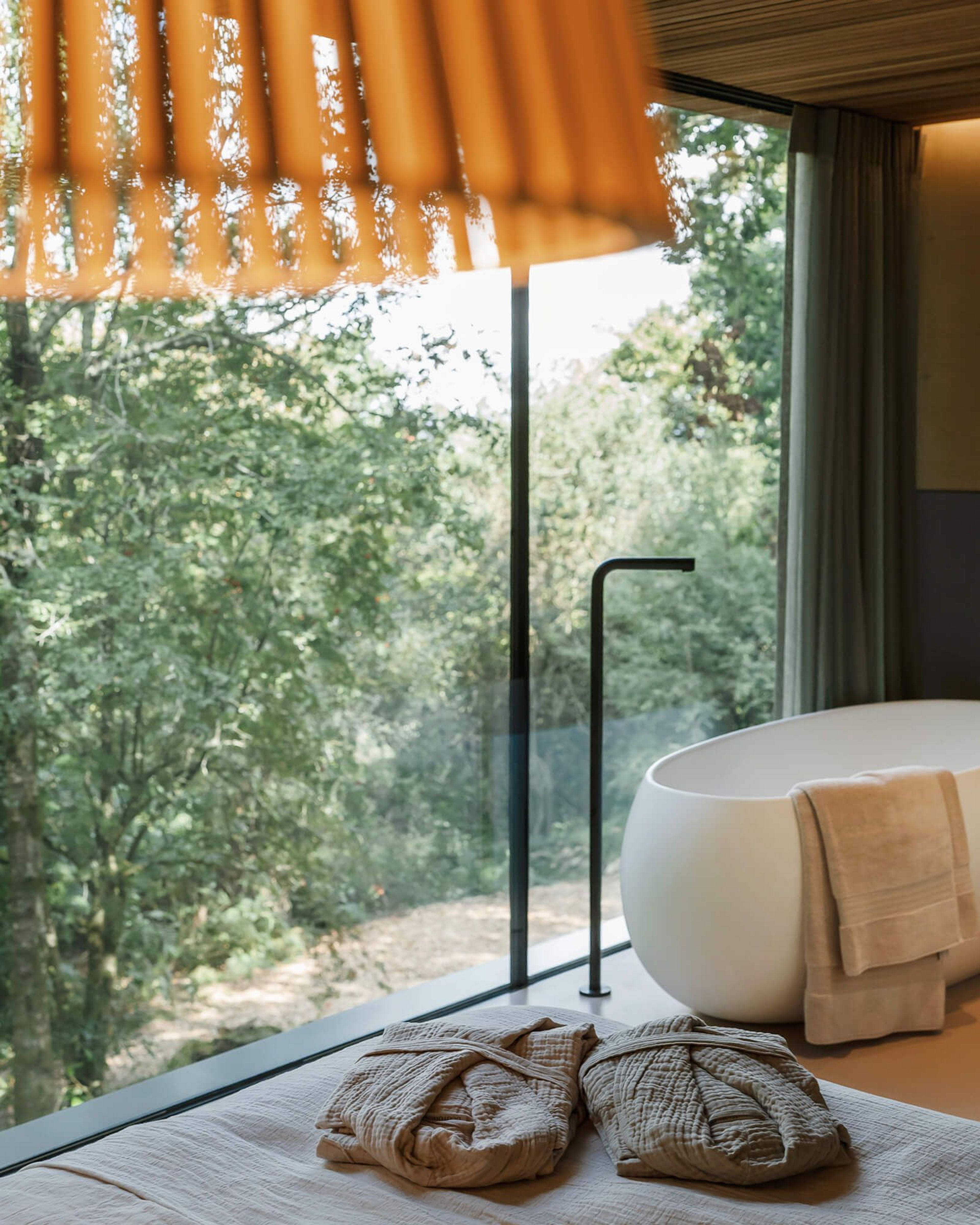
Looking Glass Lodge, East Sussex, England
As its name implies, this seamless, next-gen eco-retreat (pictured above) was created to be a looking glass on the dense green world around it, a nature reserve thick with old-growth forest. Unobtrusive yet architectural, it hugs a natural embankment and sits cantilevered atop a steel structure to avoid interference with the vegetation around it. (Visit Looking Glass Lodge here.)
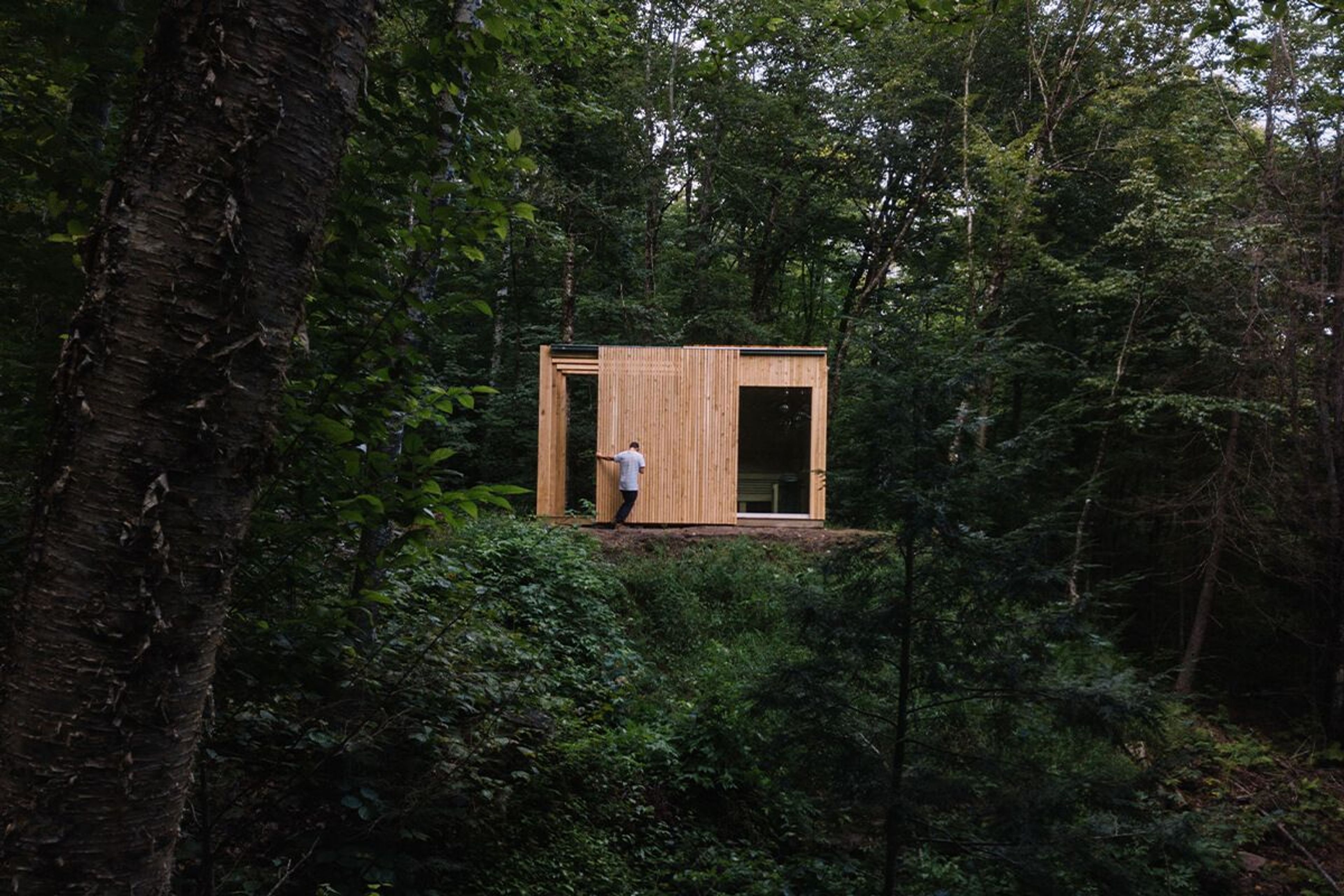
Hinterhouse, Quebec, Canada
Built with the spirit of remoteness, this sustainably created woodland cabin offers forest views from every angle. Plus, with every booking, its owners plant 10 trees. A deep woods immersive experience, each stay is designed to deepen your connection to nature. (Visit Hinterhouse here.)
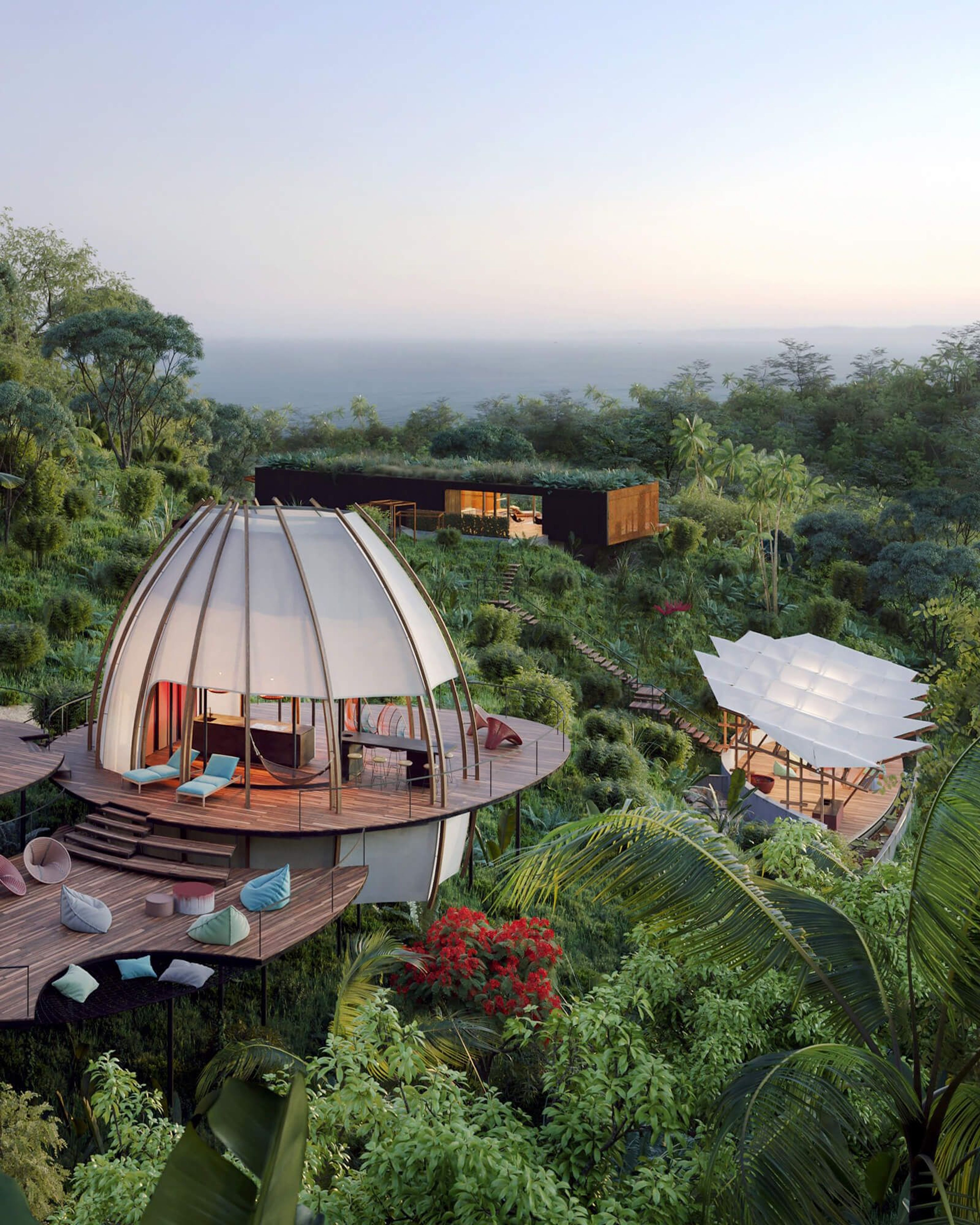
The Coco, Puntarenas, Costa Rica
Vibrant nature embraces these open-air, organically constructed, seed pod-inspired habitations. Boasting serious treehouse vibes, the architect-designed eggs are suspended over the tree canopy, feature a color palette that mimics the surrounding vegetation and flora, and are connected by a veritable playground of suspended staircases and skybridge walkways, fertile ground for living in celebration of the jungle. (Visit The Coco here.)
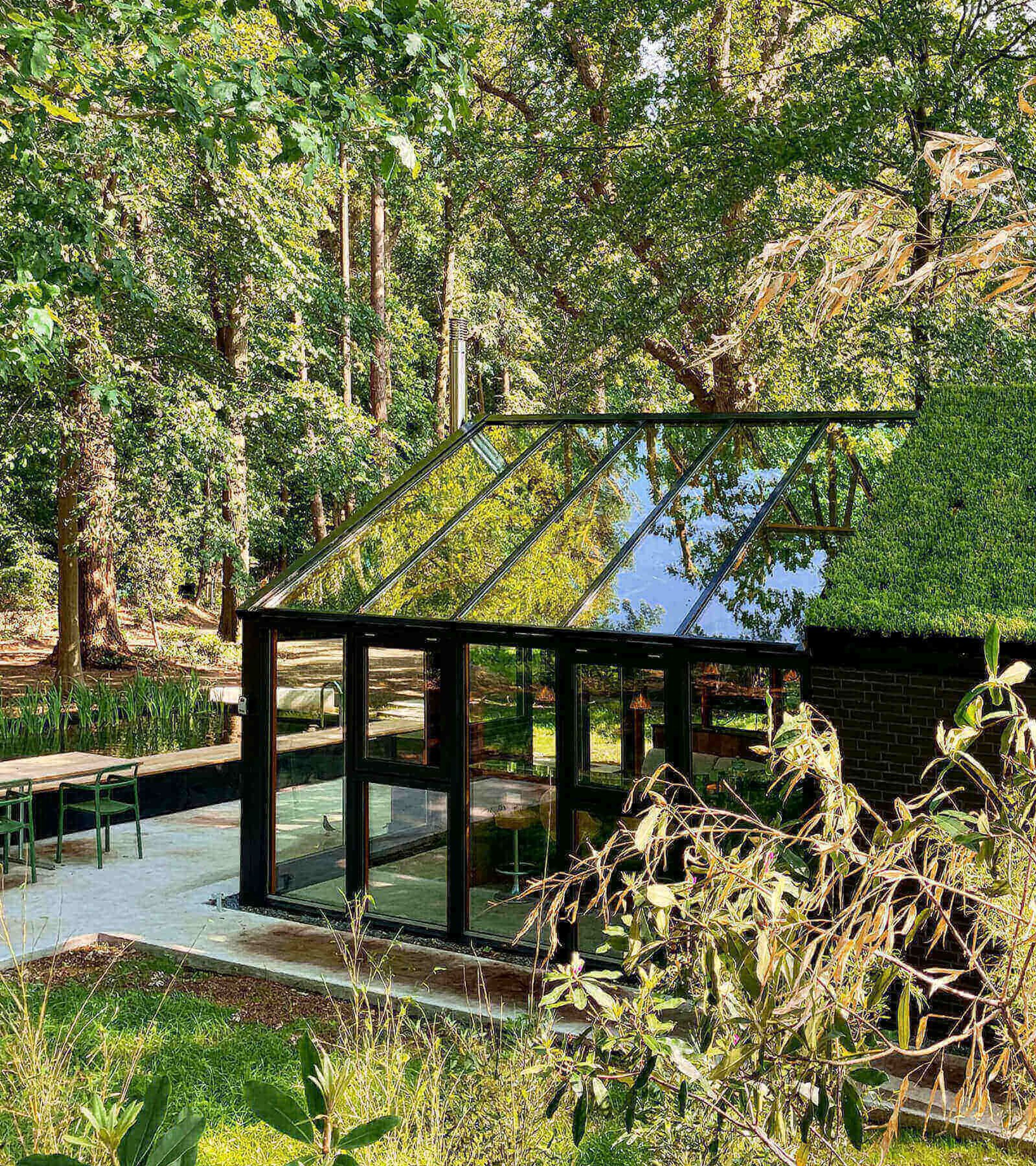
De Kas, Gelderland, Netherlands
A carpet of living green covers the top of this mostly-glass tiny house that’s huge when it comes to views of the surrounding “forgotten forest”. Plants twist and tangle around interior beams and a reed-lined natural swimming pool extends right outside its door. (Visit De Kas here.)
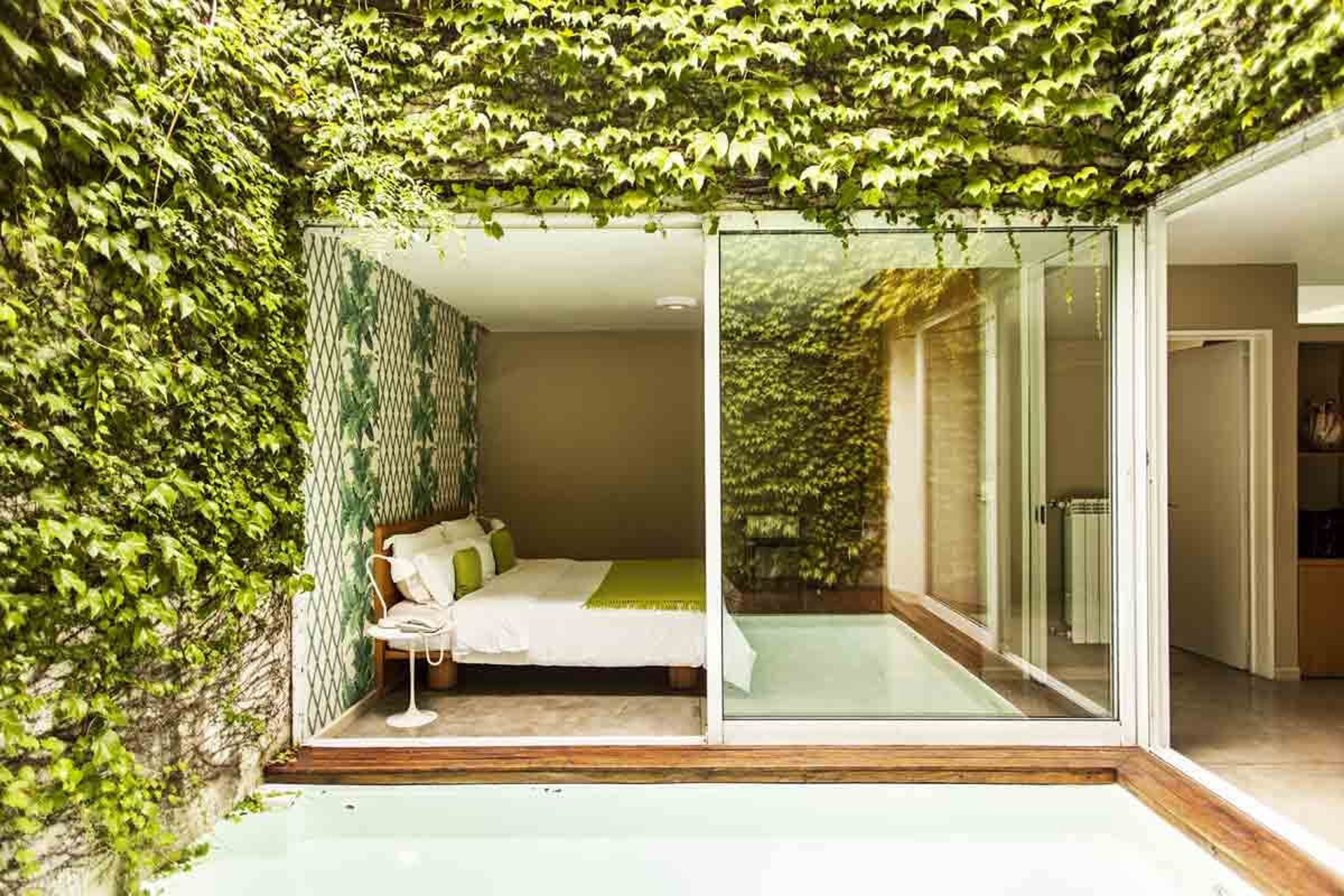
Home, Buenos Aires, Argentina
An unexpected oasis of lush plant life and intimate gardens, this urban hideaway is teeming with nature. A factory-turned-garden-inn, the hip, colorful spot immerses you in nature-rich interior décor (think botanical wallpapers and flora-inspired, textural textiles) plus gardens dense with creeping vines, lush turf, and overhanging trees. (Visit Home here.)
Browse more homes with great eco credentials here.
